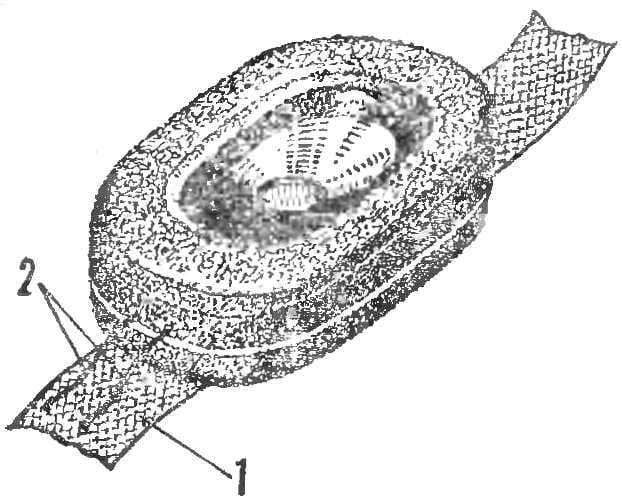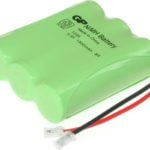 The design uses dynamic heads 0,25 GD or similar without any alterations. Ear cushions and pillows are made of a rubber sponge (you can buy in the pharmacy). For heads with a cone diameter of about 55 mm suitable sponge about the size of 155X60X35 mm. First take a piece of pressshpana or solid cardboard the size of 130X130 mm. In it cut a hole and glued it to the head (Fig. 1). Then, in the spongebob ear cushions cut out (or pluck) recess the speaker housing (Fig. 3), and the sponge-cushion (Fig. 2) make the hole oval. Its inner edge is cut from the side adjacent to the ear.
The design uses dynamic heads 0,25 GD or similar without any alterations. Ear cushions and pillows are made of a rubber sponge (you can buy in the pharmacy). For heads with a cone diameter of about 55 mm suitable sponge about the size of 155X60X35 mm. First take a piece of pressshpana or solid cardboard the size of 130X130 mm. In it cut a hole and glued it to the head (Fig. 1). Then, in the spongebob ear cushions cut out (or pluck) recess the speaker housing (Fig. 3), and the sponge-cushion (Fig. 2) make the hole oval. Its inner edge is cut from the side adjacent to the ear.
Solder the lead wires and, if necessary, an additional resistor whose resistance is chosen experimentally depending on the power amplifier. The cardboard panel, punch a few holes through them and pass the wire.
Surfaces of the jaws and panels coated with glue and allow it to dry. Then again, put glue all three parts are interconnected, pre-conceding to the outside of the wire. Ready earphone have a few hours to put under the press until the glue dries. To avoid short circuits that may damage the ULF, wire guide through the sponge, using the hair-pin invisible.

Fig. 1. Panel with a dynamic head:
1 —cardboard, 2 —head, 3 — insights.

Fig. 2. Sponge-cushion.

Fig. 3. Sponge ear cushions with a recess of the head body.

Fig. 4. Earphone:
1 — rubber band 2 — conclusions.
Similarly, they produce a second phone.
Headband is made of a piece of rubber band with a width of about 5 cm (it is also sold in the pharmacy).
On the outer side of the embouchure glued the trim strip, which will run ribbon-headband (Fig. 4).
Now all that remains is to solder to the pins of the heads of the three wire connection cable with connector, and stereociliary ready to work.
A. VLASENKO



